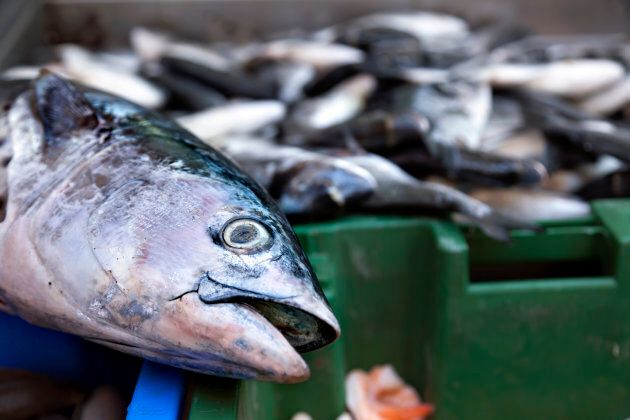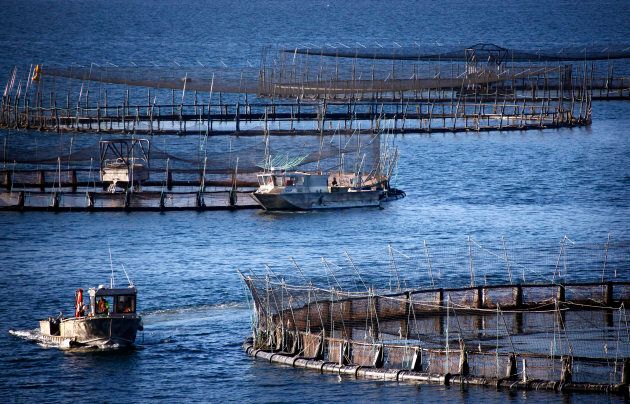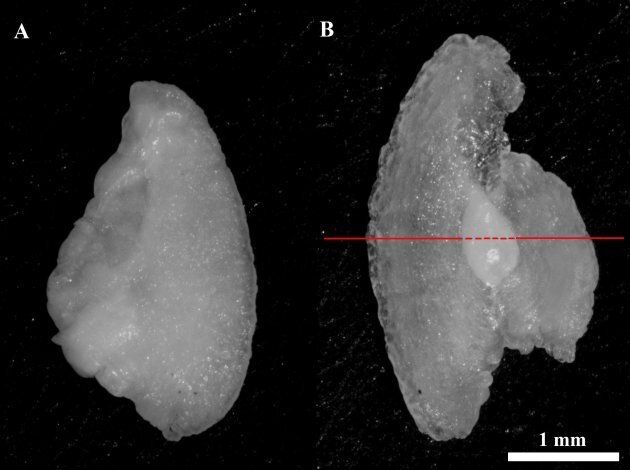Salmon is one of Australia's most popular seafoods but our growing desire to get the Omega 3-rich superfood on our plates faster could be sending the species deaf, a group of Australian researchers has found.
Most of the salmon we eat comes from large-scale salmon farms, where salmon are bred from egg to harvest in large nets and fed carefully monitored diets. In Australia, it's a $550 million industry and growing fast.

But half of the world's farmed salmon -- including those in Australian fisheries -- are deaf due to an inner ear deformity which is extremely rare in wild populations.
Up until now, scientists have been unable to pinpoint what it was about fisheries that was causing fish to develop the deformity at such an alarming rate.
Fisheries have manipulated the conditions inside their salmon farms in order to speed up the time it takes salmon to reach harvest size (around 3 or 4kg).
We're effectively spending a lot of money – millions and millions of dollars -- on restocking programs, where we may be releasing (salmon) that are doomed never to survive."
Through careful selected breeding of the fish, growing them in warmer water, feeding them a carefully calculated diet and exposing them to light around the clock (thus maximising feeding time), fish farmers have accelerated their normal growth cycle of salmon from several years down to less than 12 months.
Now, a study led by Melbourne researchers has demonstrated that this accelerated growth rate appears to be to blame for the crippling ear deformity.
Working with scientists in Norway, the biologists examined the deformed inner ears of 1,000 fish in Norway, Chile, Scotland, Canada and Australia.
"We found that we could reduce the incidence of the deformity by reducing how fast a fish grew," explained University of Melbourne researcher and lead author of the study, Tormey Reimer.
"The fastest-growing fish were three times more likely to be afflicted than the slowest, even at the same age. Such a clear result was unprecedented."

Salmon hear sounds underwater using tiny crystals -- called otoliths -- inside their brains, which vibrate similarly to a human's ear bone. In a normal salmon, these otoliths are made up of a mineral called aragonite.
But when the researchers examined the otoliths of deformed salmon, they found they were composed of a different mineral, vaterite. Vaterite is lighter, larger and less stable.
"When you look at it, it looks kind of glassy," study co-author Professor Steve Swearer told HuffPost Australia.
"It grows very differently, it's less dense and it actually grows bigger. What we showed was that due to that change the salmon have about a 50 percent hearing loss."
This hearing loss violates two of the 'Five Freedoms' -- an animal welfare guide widely used and recongised around the world: freedom from disease, and the freedom to express normal behaviour.
"For fish, sound is really important," Professor Swearer explained.
"They use it for navigation, they use it for finding food, they use it for avoiding predators. It is as important if not more important than vision -- particularly if they're living in a dark environment."
The study's results are likely to be unwelcome news for fish farmers focused on getting their salmon to full-size as quickly as possible, but it also has potentially serious implications for declining wild salmon populations worldwide.

Overfishing, habitat destruction and pollution have seen fish populations plummet in recent decades, with one study finding global ocean fish populations have halved since 1970.
Every year, millions of dollars are invested around the world in efforts to replenish declining stocks of ocean fish like salmon.
These salmon are breed in captivity before being released into the wild in an attempt to replenish wild stocks, but research indicates they are dying at between three and five times the rate of their wild-born counterparts.
Thursday's findings could provide an important clue as to why.
While Professor Swearer acknowledged there are likely to be several reasons why farm-bred salmon may struggle to survive in the wild, he says slowing down the farmed fish's growth rates could see a marked improvement.
"If we're then creating fish that have hearing deficiencies, we're basically giving them yet another handicap that is going to make it harder for them to survive," Professor Swearer said.
"We're effectively spending a lot of money – millions and millions of dollars -- on restocking programs, where we may be releasing individuals that are doomed never to survive."
The findings of the research were published on Thursday in the Journal of Experimental Biology.